Top 12 Conrad L. Hall Movies: Cinematic Masterpieces
Conrad L.
Hall’s cinematic mastery has left an indelible mark on the film industry, turning each frame into a work of art.
His innovative use of light and shadow elevates storytelling to new heights, capturing the essence of each moment with precision.
We’ve curated a list of the 12 best movies that showcase Hall’s exceptional talent as a cinematographer.
From evocative noir aesthetics to the subtle interplay of natural light, these films are a testament to his visionary approach and technical prowess.
1. In Cold Blood (1967)

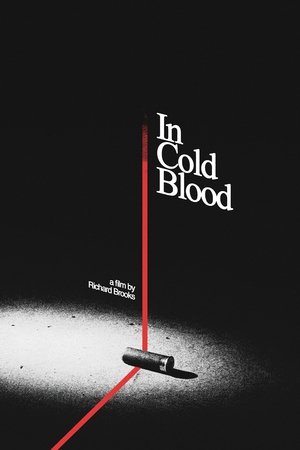
In Cold Blood
The crime that shocked a nation.
1967 • 2h 14min • ★ 7.49/10 • United States of America
Directed by: Richard Brooks
Cast: Robert Blake, Scott Wilson, John Forsythe, Paul Stewart, Gerald S. O'Loughlin
After a botched robbery results in the brutal murder of a rural family, two drifters elude police, in the end coming to terms with their own mortality and the repercussions of their vile atrocity.
When we explore the vast landscape of Conrad L.
Hall’s cinematographic achievements, In Cold Blood stands out as a monumental pillar.
Hall’s work in this film is a
His ability to craft haunting visuals captures the psychological depth and darkness of the characters’ journey.
The film’s Oscar-nominated cinematography serves as a testament to Hall’s innovative vision.
In Cold Blood transports the audience into its chilling storyline with meticulously framed shots.
Shadows and light are wielded as storytelling tools, each contributing to the film’s brooding atmosphere.
Hall’s decision-making process behind camera angles and lighting setups drives the emotional undertone of every scene.
We understand their impact through:
- Visual emphasis on the isolation and desolation felt by the characters,
- Contrasting moments of calm with sequences of intense darkness to heighten the narrative tension.
To capture the authenticity of the story, Hall employed on-location shoots, marking a departure from the studio-bound constraints of the era.
This choice brings to life the real-world backdrop against which the film’s events unfold.
His collaboration with director Richard Brooks resulted in a symbiotic relationship – one where visual storytelling paralleled narrative progression seamlessly.
Hall’s influence elevates In Cold Blood beyond mere adaptation, embedding it with a distinct visual language that resonates with audiences.
2. Butch Cassidy and the Sundance Kid (1969)


Alive or Preferably Dead
Booze, Banks & Broads! They Had Their Hands in Everything!
1969 • 1h 37min • ★ 5.6/10 • Italy
Directed by: Duccio Tessari
Cast: Giuliano Gemma, Nino Benvenuti, Sydne Rome, Cris Huerta, Antonio Casas
Two brothers, Monty and Ted, will inherit $300,000 if they manage to live together for six months.
When discussing the brilliance of Conrad L.
Hall’s filmography, we can’t overlook the Western classic Butch Cassidy and the Sundance Kid.
If you like Conrad L Hall’s performances, on our sister site AuteurGraph we have a profile page, a visual film timeline, and a ratings page that gives a tonne of info and data about their career in a visualized form.
Hall’s cinematography in this film is acclaimed for its vivid portrayal of the American West.
The ingenious use of wide shots captures the vast landscapes, while close-ups provide intimate glimpses into the characters’ thoughts and emotions.
This duality echoes the film’s exploration of freedom and camaraderie versus the inevitability of change and modernization.
Hall’s work on Butch Cassidy and the Sundance Kid demonstrates his mastery of visual storytelling.
His capability to meld naturalistic lighting with the rugged terrains creates a timeless aesthetic that’s as much a character in the film as Butch and Sundance themselves.
The film’s iconic bicycle ride sequence, with its playful tone and innovative camera work, stands out as one of Hall’s most memorable cinematographic moments.
Our discussion of Hall’s impact as a cinematographer would be incomplete without considering his collaboration with director George Roy Hill.
Together, they crafted a film that was both a commercial success and a critical darling.
Here are key elements that standout:
- Use of sepia tones to enhance the film’s historical feel,
- Dynamic shot compositions that keep the action engaging,
- Contrasting visual styles that reflect the protagonists’ journey.
It’s no surprise that Butch Cassidy and the Sundance Kid earned Hall an Academy Award nomination for Best Cinematography.
The film showcases his ability to use the camera as a narrative tool, ensuring audiences were not merely spectators but participants in the Old West adventure.
Hall’s work here isn’t just a feast for the eyes; it’s a pivotal element in one of the most endearing stories of friendship and adventure ever told on film.
3. Cool Hand Luke (1967)
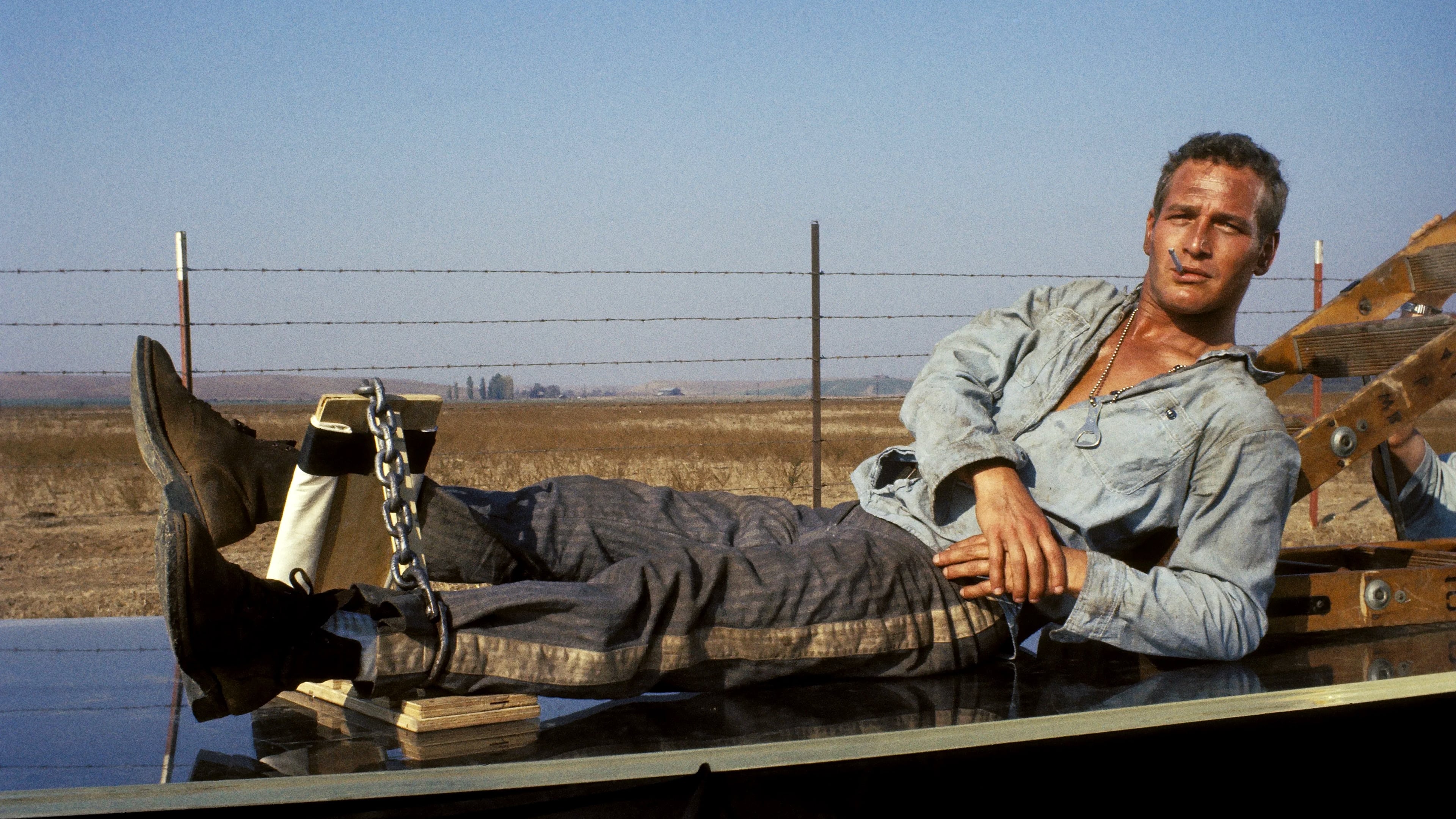
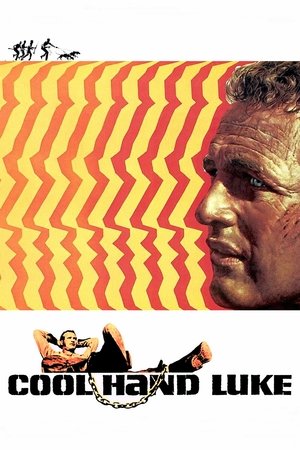
Cool Hand Luke
The man... and the motion picture that simply do not conform.
1967 • 2h 7min • ★ 7.731/10 • United States of America
Directed by: Stuart Rosenberg
Cast: Paul Newman, George Kennedy, Luke Askew, Morgan Woodward, Harry Dean Stanton
When petty criminal Luke Jackson is sentenced to two years in a Florida prison farm, he doesn't play by the rules of either the sadistic warden or the yard's resident heavy, Dragline, who ends up admiring the new guy's unbreakable will. Luke's bravado, even in the face of repeated stints in the prison's dreaded solitary confinement cell, "the box," make him a rebel hero to his fellow convicts and a thorn in the side of the prison officers.
One of Conrad L.
Hall’s most revered works is the cinematography for Cool Hand Luke.
The film presents a gripping tale of a Southern prison chain gang and the spirit of its indomitable inmate, Luke.
Hall’s expertise is evident in the composition of each frame, with visuals that enhance the narrative’s themes of freedom and resistance.
His lighting choices skillfully reflect the oppressive heat of the surroundings and the mental state of the characters.
We’re drawn into an emotional journey through Hall’s use of camera techniques.
In Cool Hand Luke, he employed a subtle but powerful array of shots, each with a purpose to reveal characters’ inner struggles and the intense dynamics between them.
- Dynamic camera movements – the hallmark of Hall’s visual storytelling,
- Strategic framing and use of natural light – showcase Hall’s attention to detail in capturing the essence of every scene.
Hall’s collaboration with director Stuart Rosenberg proves once again to be pivotal in the film’s poignant storytelling.
Together, they’ve created a visually stunning piece that resonates with rebellion and individuality.
Through Cool Hand Luke, Hall has demonstrated the profound impact cinematography has on the storytelling process.
His ability to convey complex emotions without dialogue shows his masterful command of the visual medium.
4. American Beauty (1999)


American Beauty
...Look closer.
1999 • 2h 2min • ★ 8.007/10 • United States of America
Directed by: Sam Mendes
Cast: Kevin Spacey, Annette Bening, Thora Birch, Wes Bentley, Mena Suvari
Lester Burnham, a depressed suburban father in a mid-life crisis, decides to turn his hectic life around after developing an infatuation with his daughter's attractive friend.
Conrad L.
Hall’s cinematographic prowess rose to new heights with American Beauty.
His use of color and composition not only enriched the narrative but also offered a visual feast that was both haunting and beautiful.
Hall expertly utilized the symbolism of the color red throughout the film – from the iconic rose petals to the vibrant door of the Burnham house – to signify desire, power, and danger.
The film’s most praised sequences show Hall’s deft hand at transforming mundane suburban life into visual poetry.
His lighting choices cast shadows and silhouettes that added depth to the characters’ internal conflicts.
With each frame, Hall’s mastery in creating emotionally charged atmospheres without relying on dialogue was evident.
Hall’s collaboration with director Sam Mendes was crucial in bringing out the dark, satirical undertones of American Beauty.
They worked together to use visual storytelling to explore themes of materialism, beauty, freedom, and societal pressure.
The result was a cinematic experience that stayed with audiences long after they left the theater.
In American Beauty, Hall once again demonstrated his ability to invoke complex themes through his lens, contributing significantly to the film’s numerous accolades.
Here are some major awards the film received:
- Academy Award for Best Cinematography,
- BAFTA Award for Best Cinematography.
This film remains a definitive example of how a cinematographer’s vision can elevate a movie’s narrative.
Hall’s contribution to American Beauty is a benchmark in film history that continues to inspire cinematographers and filmmakers alike.
We understand that each scene was crafted not just for its visual impact but also for its ability to carry the story forward, ensuring that every shot was meaningful.
5. Road to Perdition (2002)
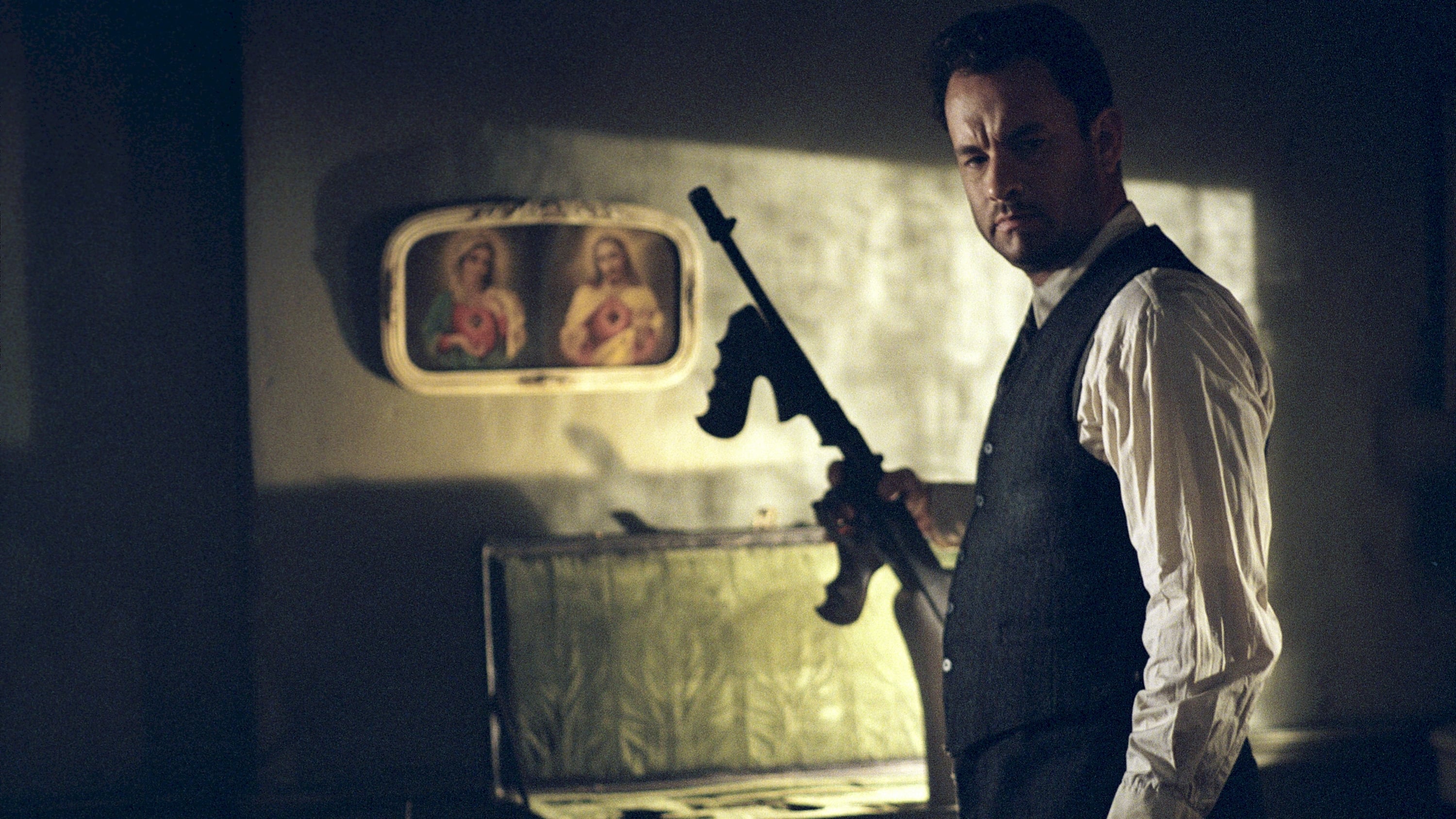
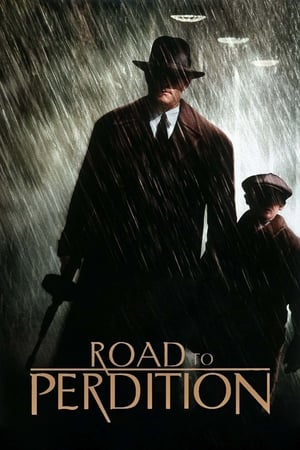
Road to Perdition
Pray for Michael Sullivan.
2002 • 1h 57min • ★ 7.357/10 • United States of America
Directed by: Sam Mendes
Cast: Tom Hanks, Tyler Hoechlin, Paul Newman, Jude Law, Daniel Craig
Mike Sullivan works as a hit man for crime boss John Rooney. Sullivan views Rooney as a father figure, however after his son is witness to a killing, Mike Sullivan finds himself on the run in attempt to save the life of his son and at the same time looking for revenge on those who wronged him.
Conrad L.
Hall’s brilliance behind the camera is once again evident in Road to Perdition.
His cinematography in this crime drama enhances the emotional weight of the narrative.
Paired with director Sam Mendes, Hall crafts a visual tapestry that’s both bleak and beautiful.
The film’s imagery reinforces the themes of revenge and redemption.
The use of shadows and light in Road to Perdition is iconic.
Hall artfully contrasts the darkness of the characters’ deeds with visually striking moments of tenderness.
His skill in camera work creates an atmosphere that’s immersive and resonant.
Audiences are swept into the 1930s era through Hall’s careful attention to detail.
Certain scenes stand out for their composition:
- A silhouetted figure against a shimmering backdrop of rain,
- A haunting confrontation in a dimly-lit room.
These moments showcase Hall’s ability to convey story through visuals alone.
His work in Road to Perdition culminates in a stunning display of his mastery over the craft of cinematography.
With Road to Perdition, Hall cements his legacy as a visual storyteller.
Our journey through his best films recognizes the impact of his distinctive style.
6. Marathon Man (1976)
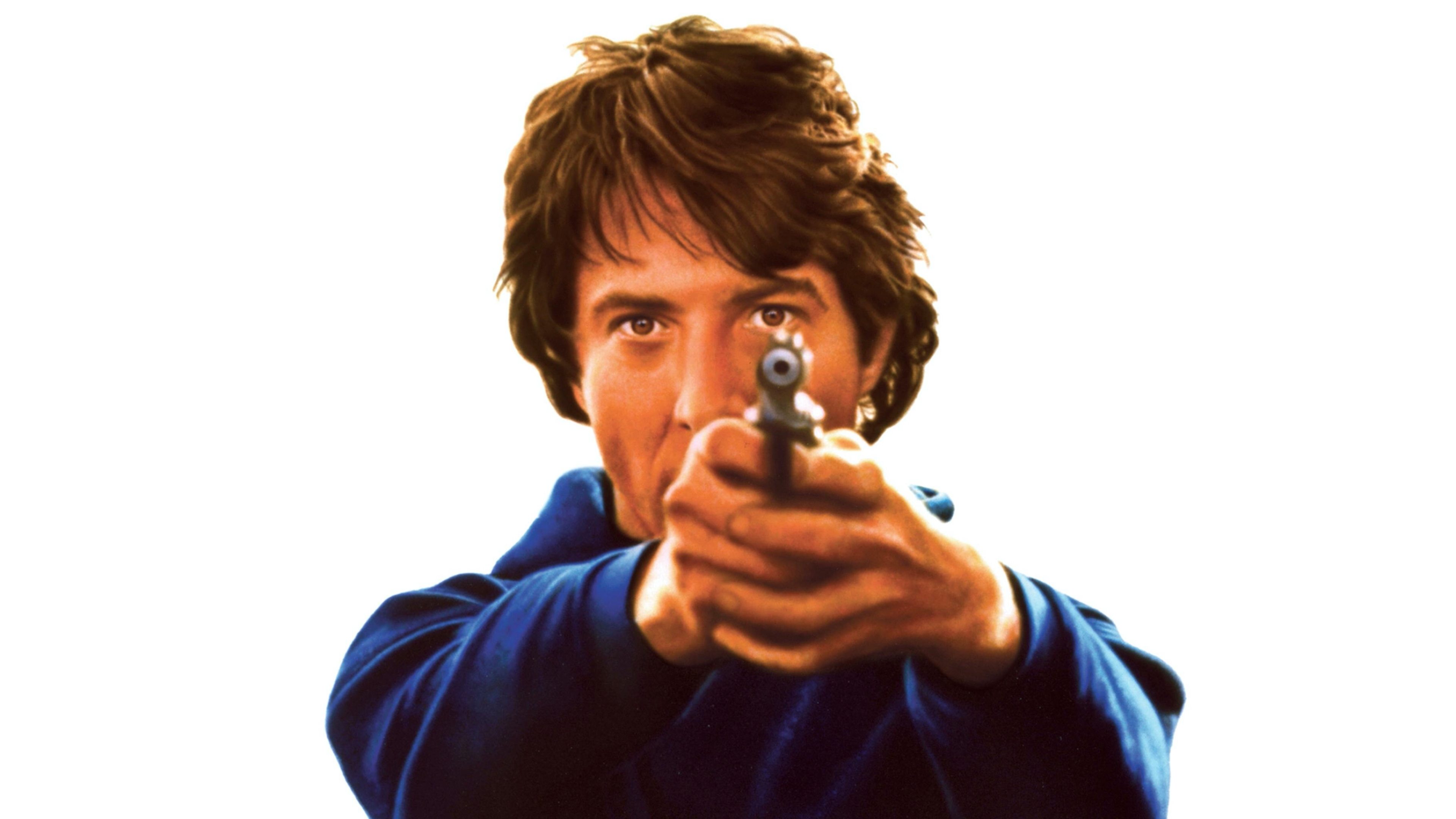

Marathon Man
One man's dangerous attempts to clear his father's name
1976 • 2h 5min • ★ 7.178/10 • United States of America
Directed by: John Schlesinger
Cast: Dustin Hoffman, Laurence Olivier, Roy Scheider, William Devane, Marthe Keller
A graduate student and obsessive runner in New York is drawn into a mysterious plot involving his brother, a member of the secretive Division.
We’re diving into the heart-pounding thriller Marathon Man, where Conrad L.
Hall’s cinematography skillfully amplifies tension and suspense.
This film showcases his extraordinary ability to use lighting and camera angles to create a visceral cinematic experience.
Cinematic mastery isn’t just about where the camera points; it’s also about how each frame tells a story.
In Marathon Man, every shot underscores the film’s dark and gritty narrative, demonstrating Hall’s deft handling of visual storytelling.
Hall’s work on this movie is a testament to his versatility behind the lens.
With unforgettable chase sequences and harrowing interrogation scenes, his use of high-contrast lighting and dynamic composition keeps viewers on the edge of their seats.
The synergy between the storyline and the cinematographic technique in Marathon Man is a core element that helped propel the film into classic status.
Hall’s ability to capture fear and paranoia is palpable throughout the film, proving once more his influence in the thriller genre.
Marathon Man does more than thrill – it exemplifies how cinematography can drive the emotional core of a film.
The collaboration between Hall and director John Schlesinger carves a relentless pace, reflecting both the physical and psychological marathon the protagonist endures.
In this filmography of Conrad L.
Hall, Marathon Man stands out not only for its gripping narrative but also for the visual depth Hall contributes.
His cinematography doesn’t just complement the story; it enhances, speaks and breathes within the confines of every frame.
We can’t help but remain utterly engrossed as Hall weaves his visual magic, immersing us in the high stakes and the pervasive dread that Marathon Man delivers so effectively.
7. Searching for Bobby Fischer (1993)
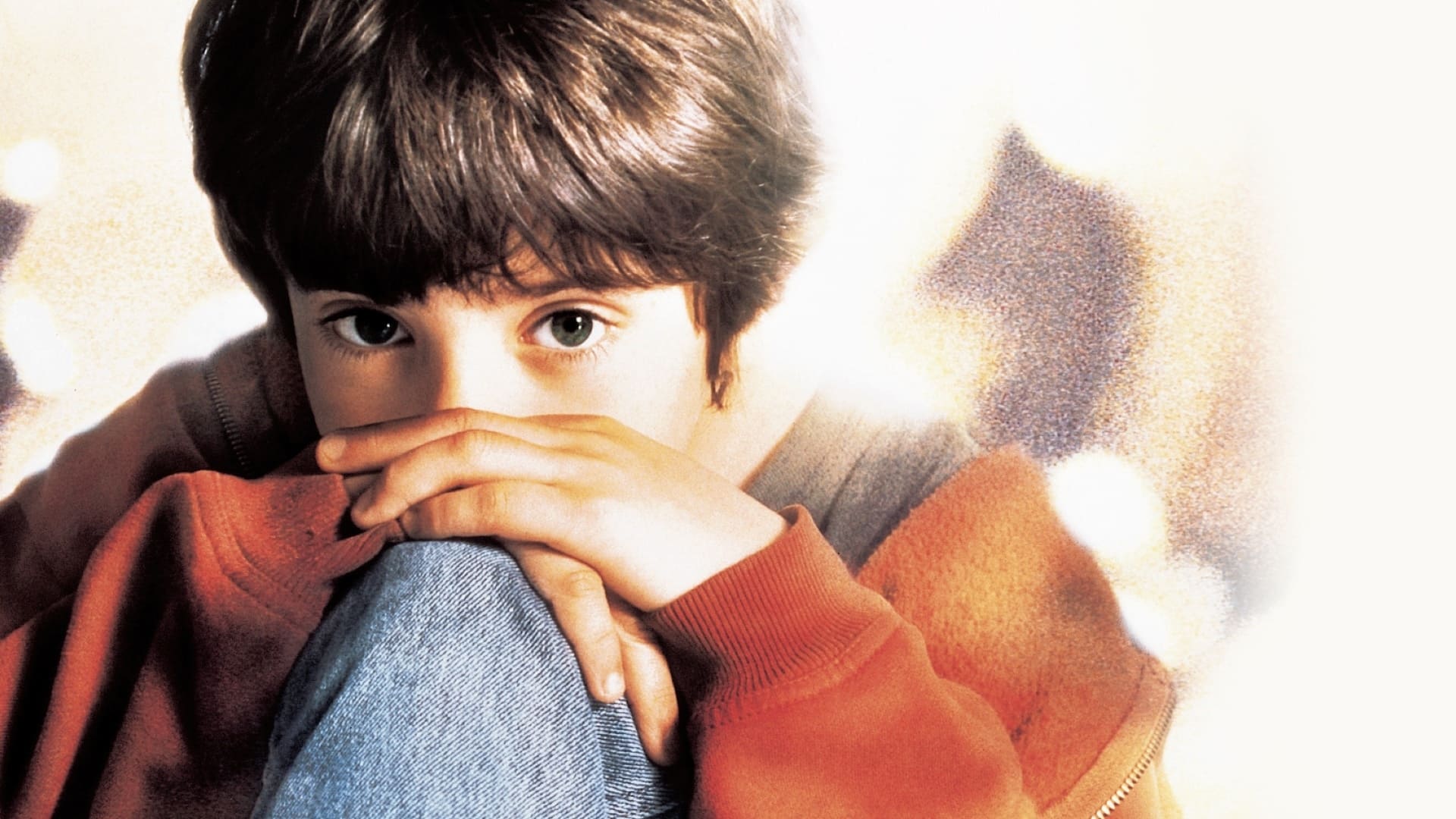
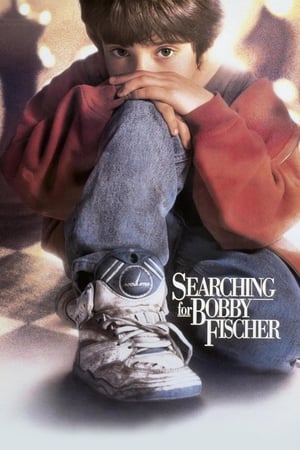
Searching for Bobby Fischer
Every journey begins with a single move.
1993 • 1h 50min • ★ 7.078/10 • United States of America
Directed by: Steven Zaillian
Cast: Max Pomeranc, Joe Mantegna, Joan Allen, Ben Kingsley, Laurence Fishburne
A seven-year-old chess prodigy refuses to harden himself in order to become a champion like the famous but unlikable Bobby Fischer.
In Searching for Bobby Fischer, Conrad L.
Hall flexes his expertise to a different genre – the intimate and cerebral world of chess.
His lighting and composition in this biographical drama accentuate the mental battlefields where young prodigy Josh Waitzkin duels with chess masters and his own expectations.
Through our eyes, we glimpse Hall’s ability to convey a child’s perspective within the often overwhelming world of adults.
His camera work guides us through Josh’s internal and external challenges, using visual metaphors to reflect the strategic depth of chess.
Searching for Bobby Fischer showcases Hall’s exquisite talent for storytelling through quieter, more nuanced visuals.
His mastery in capturing the essence of each scene without overwhelming the audience provides for a deeply engaging cinematic experience.
Hall’s collaboration with director Steven Zaillian allows subtleties and fine details of the story to emerge eloquently.
The cinematography plays a pivotal role in drawing us into the protagonist’s world, making chess matches as thrilling as any action sequence.
Here are key highlights from Hall’s work in the film:
- Subtle use of light and shadow reflecting the nuances of the game,
- Camera angles that emphasize the psychological intensity of the characters.
The emotional depth inherent in Searching for Bobby Fischer is amplified by Hall’s cinematographic choices.
His expertise in visual storytelling proves that even the smallest moves on a chess board can carry a dramatic weight under his lens.
8. A Civil Action (1998)

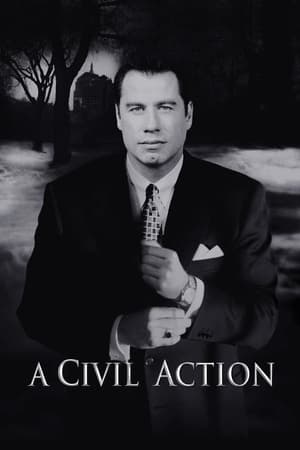
A Civil Action
Justice has its price.
1998 • 1h 55min • ★ 6.45/10 • United States of America
Directed by: Steven Zaillian
Cast: John Travolta, Robert Duvall, Tony Shalhoub, William H. Macy, Zeljko Ivanek
Jan Schlickmann is a cynical lawyer who goes out to 'get rid of' a case, only to find out it is potentially worth millions. The case becomes his obsession, to the extent that he is willing to give up everything—including his career and his clients' goals—in order to continue the case against all odds.
When we talk about A Civil Action, we’re diving into a film that deftly combines legal drama with a profoundly human touch.
Conrad L.
Hall’s cinematography plays an integral role, capturing the gritty reality of a courtroom and the emotional nuance of its characters.
Hall’s work in A Civil Action is a
His camera movements are deliberate and his framing meticulous, ensuring every shot reinforces the narrative’s tension.
In capturing the legal battle raging within A Civil Action, Hall utilizes a color palette that reflects the film’s complex themes of justice and morality.
Muted tones and stark contrasts create a somber mood that echoes the gravity of the subject matter.
The critical acclaim for A Civil Action isn’t just for the compelling story and performances.
Hall’s ability to complement these elements with his visual expertise is undeniable, making the film stand out in our list.
- Hall’s cinematography enhances the film’s legal complexities,
- It answers the call for both realism and artistry in visual narratives.
- A Civil Action* stands as a testament to Hall’s versatility with genre, showing us his dexterity in shifting from action-packed thrillers to character-driven dramas. It’s a vivid reminder that the depth of Hall’s talent is not limited to any single cinematic style.
9. Without Limits (1998)
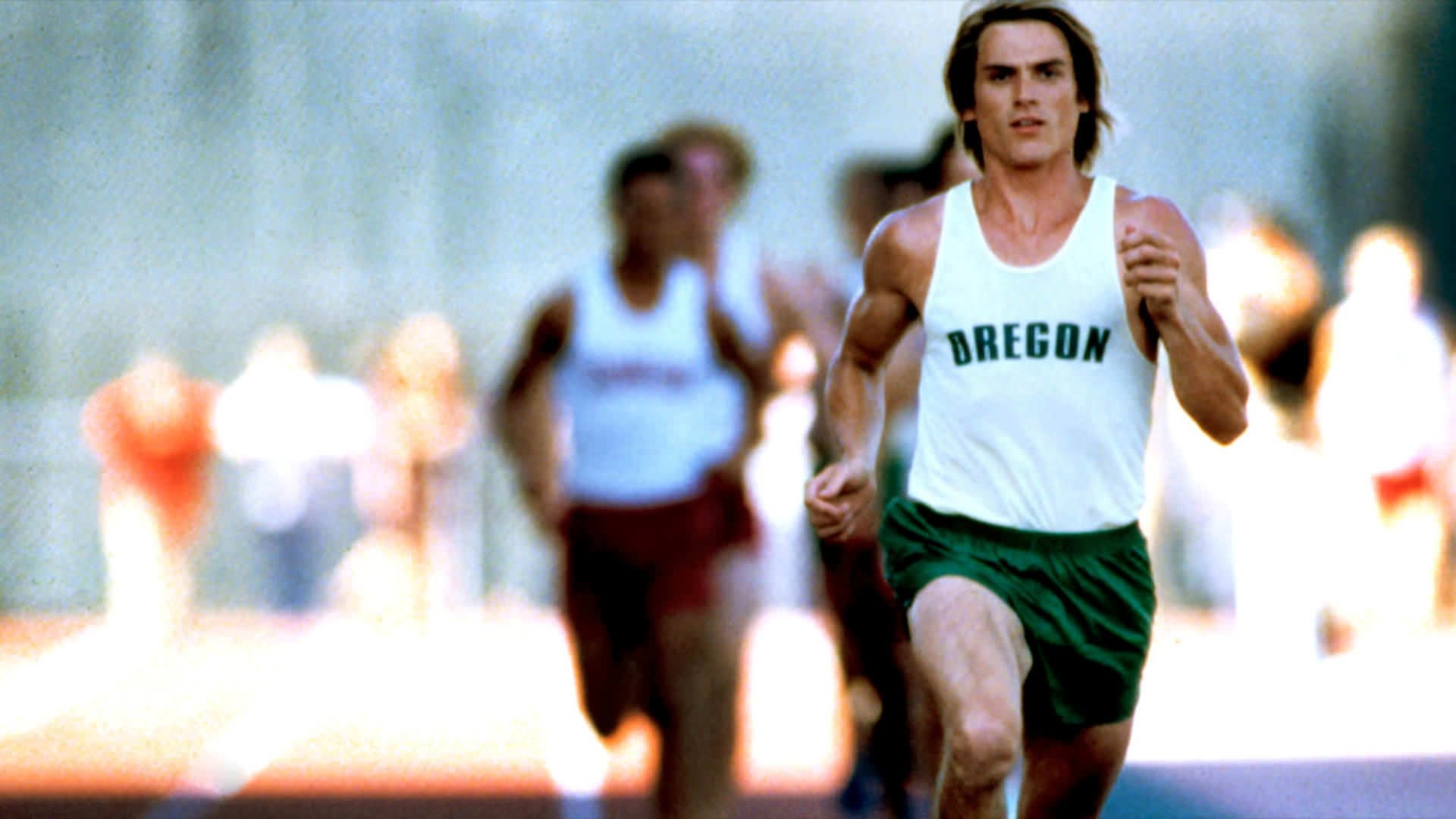
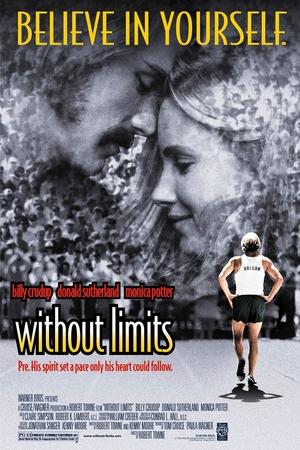
Without Limits
PRE. The way he competed. The way he lived his life.
1998 • 1h 57min • ★ 6.5/10 • United States of America
Directed by: Robert Towne
Cast: Billy Crudup, Donald Sutherland, Monica Potter, Jeremy Sisto, Matthew Lillard
The life of renowned runner Steve Prefontaine and his relationship with legendary coach Bill Bowerman.
In Without Limits, Conrad L.
Hall’s cinematographic talent shines through in the realm of biographical sports dramas.
Hall’s ability to capture the intense physicality and emotional highs of athletic competition is on full display.
He highlights the raw determination and grit of long-distance runner Steve Prefontaine.
His camera work immerses us in the very heart of the track, where every bead of sweat and strained muscle becomes part of the storytelling.
This film demanded a visual style that could keep pace with the thunderous footfalls of a racing icon.
Hall delivered with dynamic shot compositions that reflect the turbulence and velocity inherent in the sport.
Our appreciation for the film deepens when we consider Hall’s adept use of natural lighting.
This leverage of environmental elements helps to engrave each race and training session into our memory with stark clarity.
Without Limits also benefits greatly from its strategic contrasts –
- The isolation of the runner in long shots that stress the solitary nature of the sport,
- The use of close-ups that lay bare the protagonist’s emotional journey.
Working closely with director Robert Towne, Hall forged a visual narrative that’s both inspiring and heartrending.
They create a piece that transcends the sports genre, delving deeply into the life and legacy of a man who lived with insatiable drive and passion.
Hall’s cinematography in Without Limits stands as a testament to his versatility.
It reinforces the film’s portrayal of a complex hero with a balance of reverence and raw authenticity.
10. The Professionals (1966)
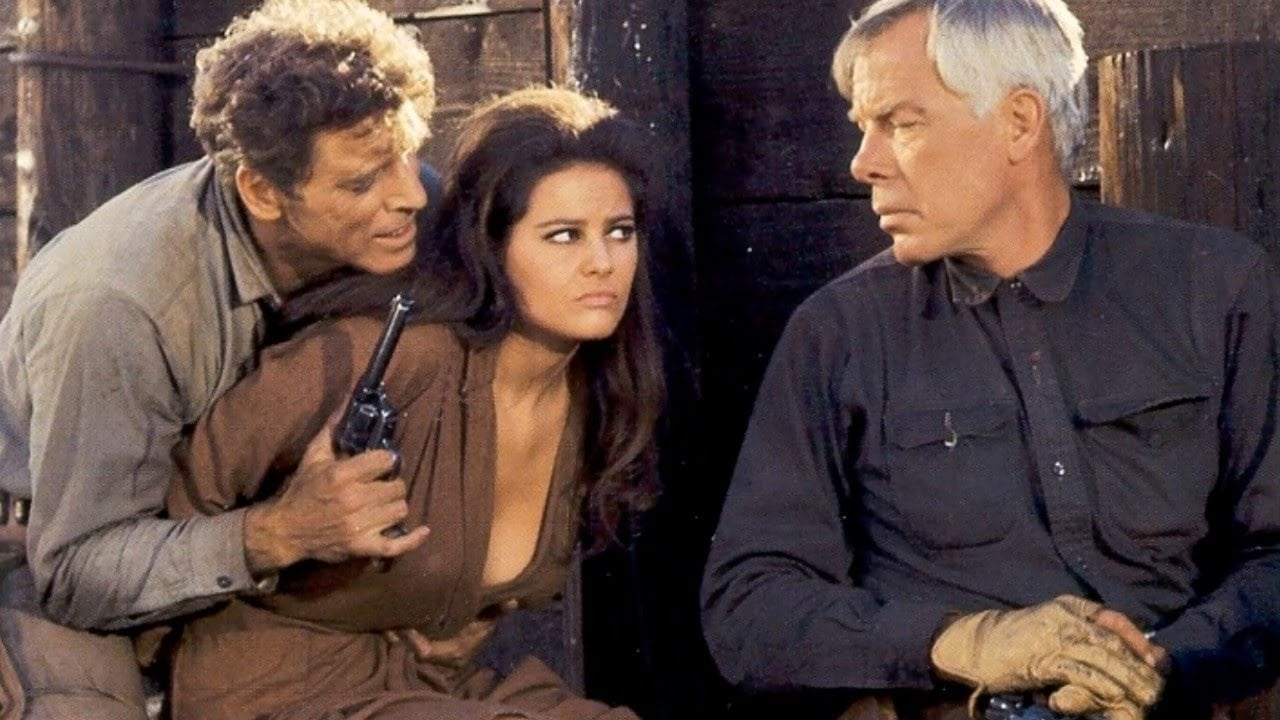

The Professionals
Rough, tough and ready.
1966 • 1h 57min • ★ 7.09/10 • United States of America
Directed by: Richard Brooks
Cast: Burt Lancaster, Lee Marvin, Robert Ryan, Woody Strode, Jack Palance
An arrogant Texas millionaire hires four adventurers to rescue his kidnapped wife from a notorious Mexican bandit.
As we jump deeper into Conrad L.
Hall’s esteemed filmography, we cannot overlook The Professionals.
This film sees Hall harness the sprawling vistas of the American West to stunning effect.
His talent for juxtaposing the ruthless grit of the characters against the awe-inspiring landscapes makes for a visually compelling experience.
Hall’s work in The Professionals earned him an Academy Award nomination for Best Cinematography.
The film’s lighting and use of natural backdrops underscore the action and drama, demonstrating his versatility and command over different film genres.
Here are some of the noteworthy cinematographic elements in The Professionals –
- Dynamic camera movements that encode the narrative’s energy,
- Strategic use of natural light to enhance the rugged features of the landscape.
We remember The Professionals not just for its high-octane storyline but also for Hall’s ability to craft a visual language that elevates the film.
His expert manipulation of contrast and texture creates a sense of depth that pulls us right into the heart of the story.
In every frame of The Professionals, Hall articulates a rich tapestry of color and movement.
His choices in framing capture not only the action but the essence of the Wild West – a testament to his cinematic brilliance.
11. Electra Glide in Blue (1973)
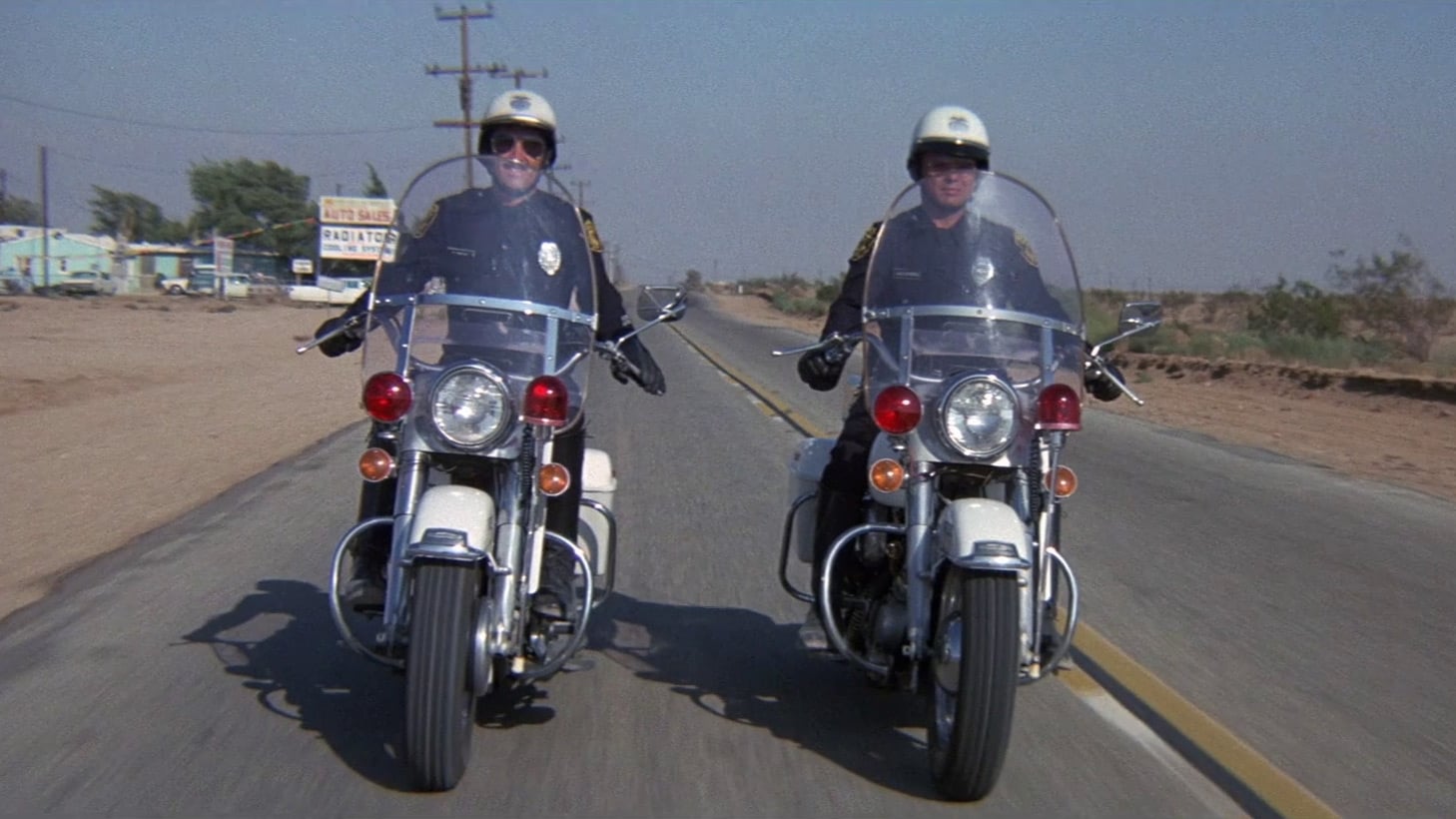
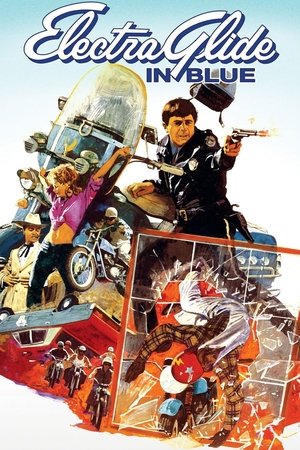
Electra Glide in Blue
He's A Good Cop..... On A Big Bike..... On A Bad Road.
1973 • 1h 54min • ★ 6.892/10 • United States of America
Directed by: James William Guercio
Cast: Robert Blake, Billy Green Bush, Jeannine Riley, Elisha Cook Jr., Royal Dano
A short Arizona motorcycle cop gets his wish and is promoted to Homicide following the mysterious murder of a hermit. He is forced to confront his illusions about himself and those around him in order to solve the case, eventually returning to solitude in the desert.
As we jump into Electra Glide in Blue, we’re met with a film that stands out for its stark depiction of the American Southwest and the lone lawman at its core.
Conrad L.
Hall’s cinematographic contributions are both poignant and visually breathtaking, inviting us into the heart of the narrative through his lens.
The cinematography in Electra Glide in Blue is a powerful force, steeped in symbolism and the harsh realities faced by the protagonist.
The visuals convey the isolation and internal struggle of the character as well as the expansive desolation of the settings he navigates.
In examining the camera work, we notice Hall’s strategic use of wide shots and close-ups.
The wide shots capture the vastness of the landscape, juxtaposed with close-ups that communicate personal anguish, highlighting Hall’s expertise in visual storytelling.
Electra Glide in Blue is a cinematography showcase –
- A blend of artistic camera angles,
- Strategic use of natural lighting,
- Compelling shot compositions.
Hall employs a color palette that echoes the film’s themes of idealism and disillusionment.
The way he contrasts the vibrant blues of the sky with the earthy tones of the desert terrain adds another layer of meaning to our understanding of the character’s journey.
Through Hall’s lens, the chase sequences and encounters are infused with an energy that complements the narrative.
His steady hand ensures each moment is captured with precision, ensuring the action translates fluidly on screen.
We regard Hall’s approach to this film as a quintessential example of using a camera to tap into the emotional undercurrents of a story.
The cinematographic excellence in Electra Glide in Blue is irrefutable evidence of his ability to convey a profound narrative through imagery alone.
12. Fat City (1972)
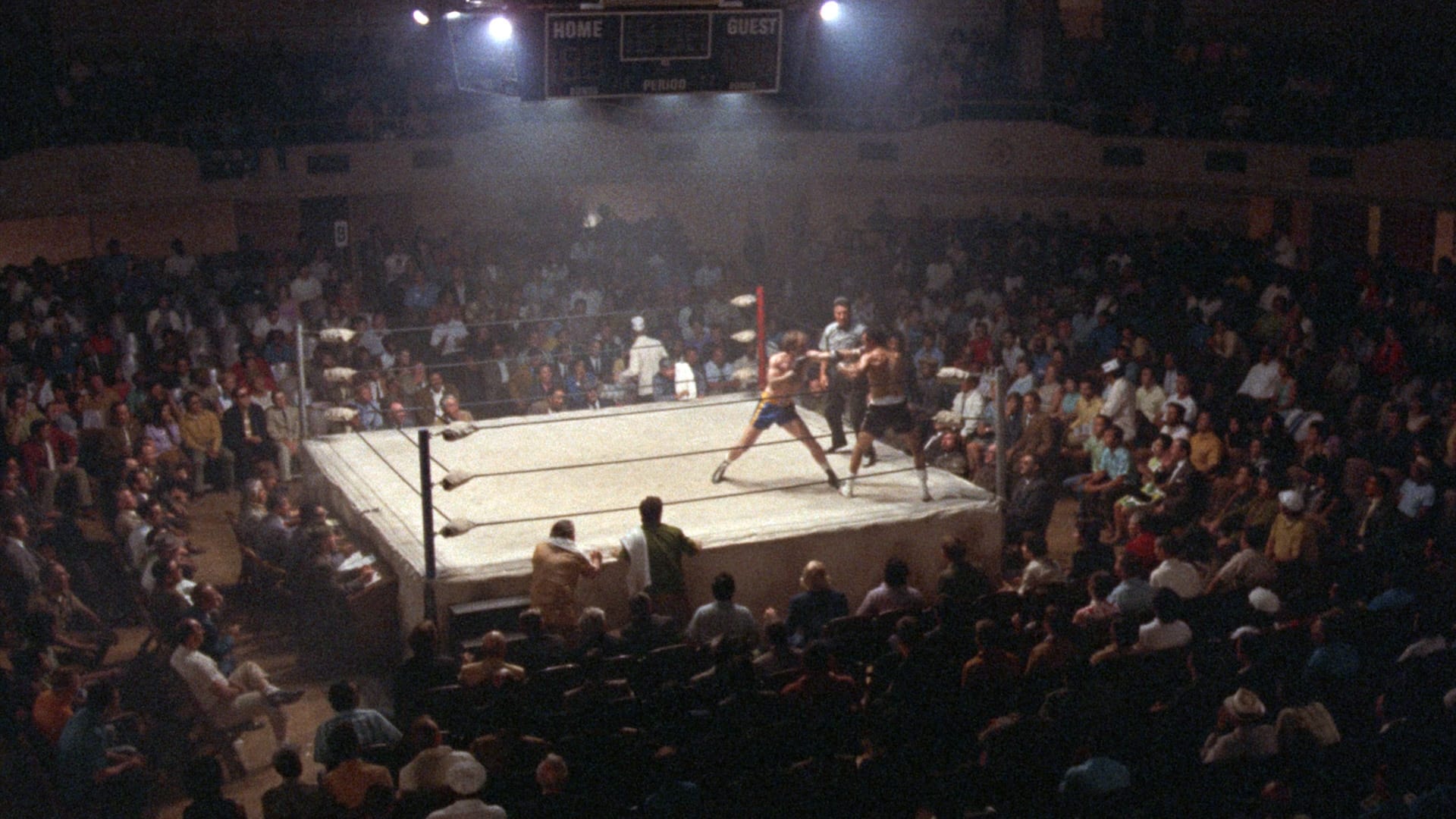
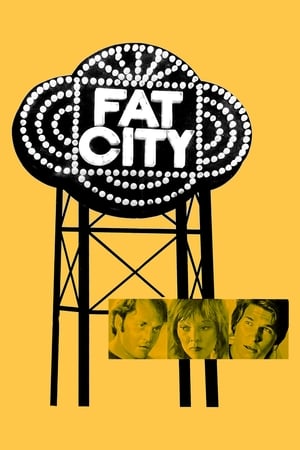
Fat City
Life is what happens in between rounds.
1972 • 1h 37min • ★ 7.04/10 • United States of America
Directed by: John Huston
Cast: Stacy Keach, Jeff Bridges, Susan Tyrrell, Candy Clark, Nicholas Colasanto
Two men, working as professional boxers, come to blows when their careers each begin to take opposite momentum.
In Fat City, Conrad L.
Hall’s cinematography paints the bleak and unforgiving world of small-time boxing with stark realism.
Each frame of the film feels drenched in the sweat and blood of the characters’ lives, reflecting a rawness that’s as gritty as it is truthful.
Our exploration of Hall’s work wouldn’t be complete without acknowledging the powerful simplicity he brought to this 1972 classic.
He had a unique way of capturing the essence of Stockton, California, transforming it into a landscape that’s both a character and a backdrop in the narrative.
The film’s visual approach emphasizes the depths of defeat and the flickers of hope in the boxers’ journey.
His use of natural lighting and a predominantly muted color scheme intensifies the sense of despair and futility that drives the film’s tone.
In keeping with Hall’s signature style –
- The characters are often silhouetted against harsh California sunlight,
- Shadows play a prominent role, symbolizing the darker aspects of life that the boxers must face.
Fat City stands as a testament to Hall’s ability to tell a story visually without resorting to over-stylization.
The film remains a vivid and poignant portrayal of life’s struggles, with Hall’s cinematography serving as an unflinching lens through which the audience can watch a down-and-out tale unfold.
Top 12 Conrad L. Hall Movies: Cinematic Masterpieces – Wrap Up
We’ve journeyed through the stunning landscapes of Conrad L.
Hall’s cinematography, marveling at how each frame tells a story of its own.
His mastery in films like “Fat City” showcases a visual poetry that resonates with audiences even today.
Hall’s legacy lives on in the shadows and light of the cinematic world, reminding us that the lens through which we view a film can be just as impactful as the narrative it unfolds.
Let’s carry the inspiration we’ve gleaned from his work into our appreciation of film as an art form.
Trust us, the next time you settle in for a movie night, you’ll see the screen with new eyes.
Frequently Asked Questions
Who is Conrad L. Hall?
Conrad L.
Hall was a celebrated cinematographer known for his influential work in the film industry, including his visually striking work on the film “Fat City.
“
What is “Fat City” about?
“Fat City” is a 1972 film that explores the bleak world of small-time boxing, depicting the despair and futility faced by its characters with stark realism.
How does Conrad L. Hall’s cinematography impact “Fat City”?
Hall’s cinematography in “Fat City” employs natural lighting and a muted color scheme to reinforce the film’s tone of despair, using silhouettes and shadows to symbolize the characters’ darker life aspects.
What visual techniques are prominent in Hall’s work in the film?
Hall’s signature style in “Fat City” includes the use of silhouettes against harsh sunlight and the casting of prominent shadows to enrich the narrative with a sense of realism and depth.
Why is “Fat City” considered a significant work of Conrad L. Hall?
“Fat City” is deemed significant for its unflinching approach to storytelling.
Hall’s ability to tell a visually compelling story without over-stylization makes it an influential work in the realm of cinematography.






